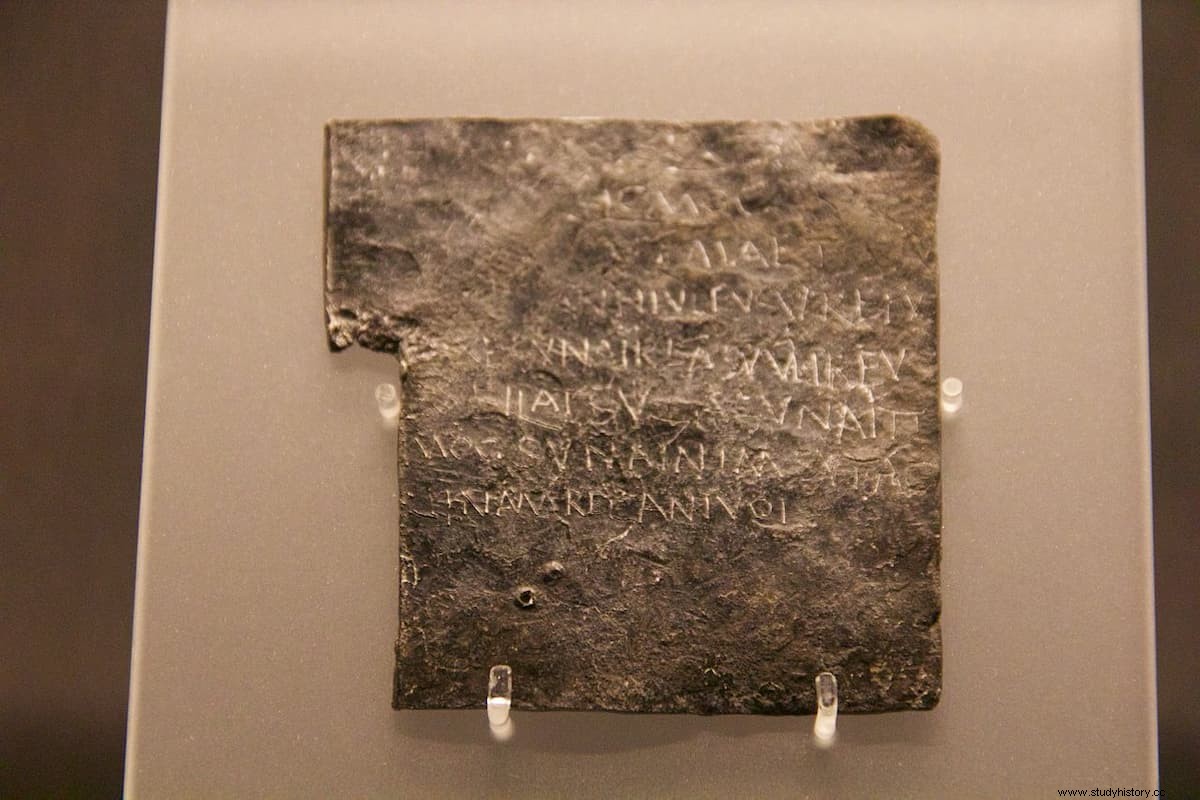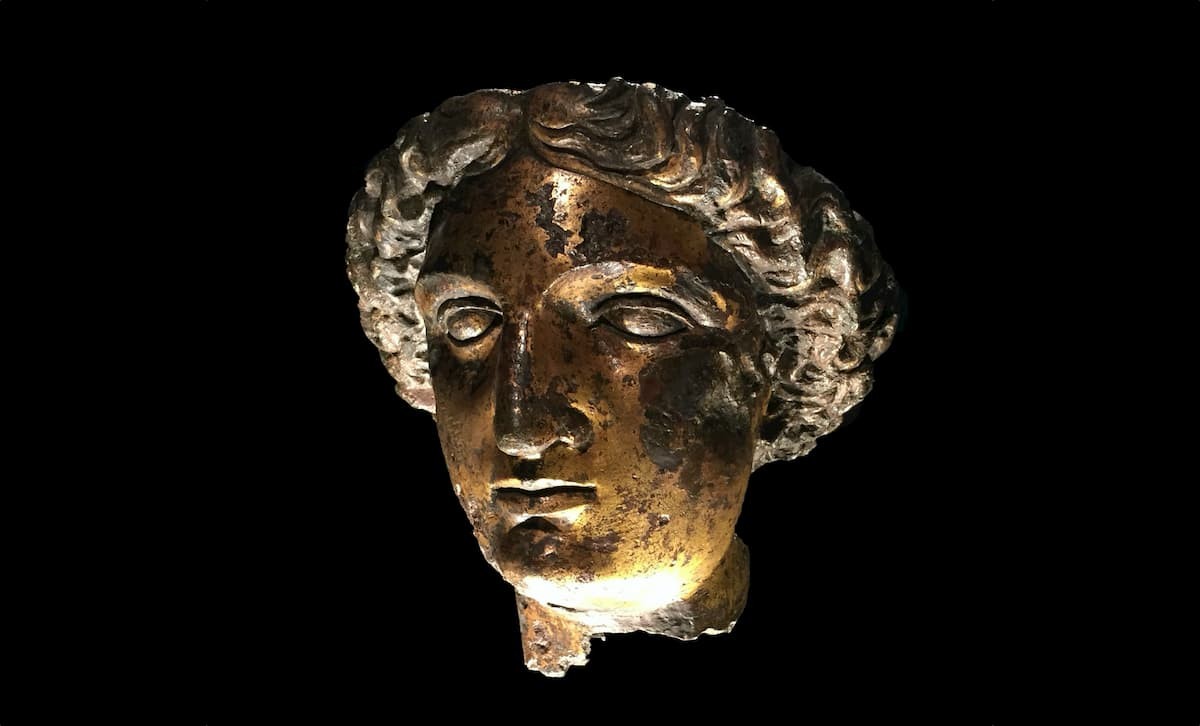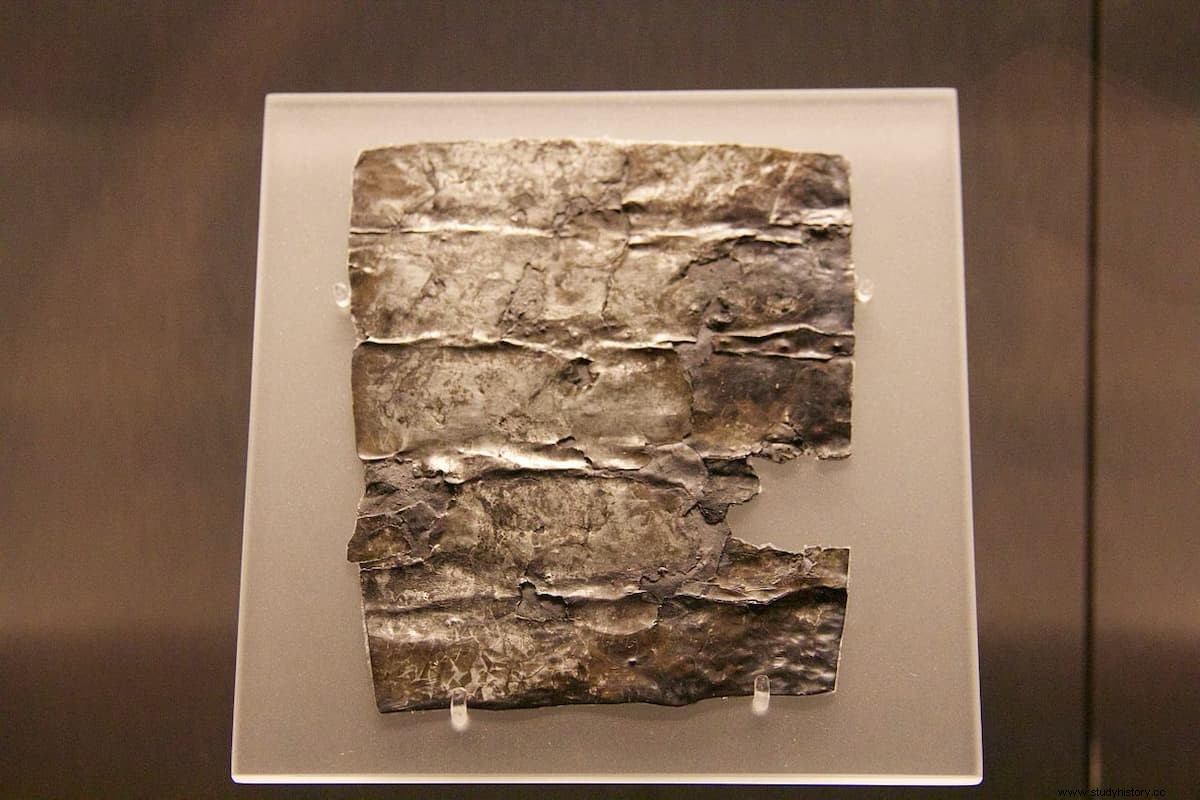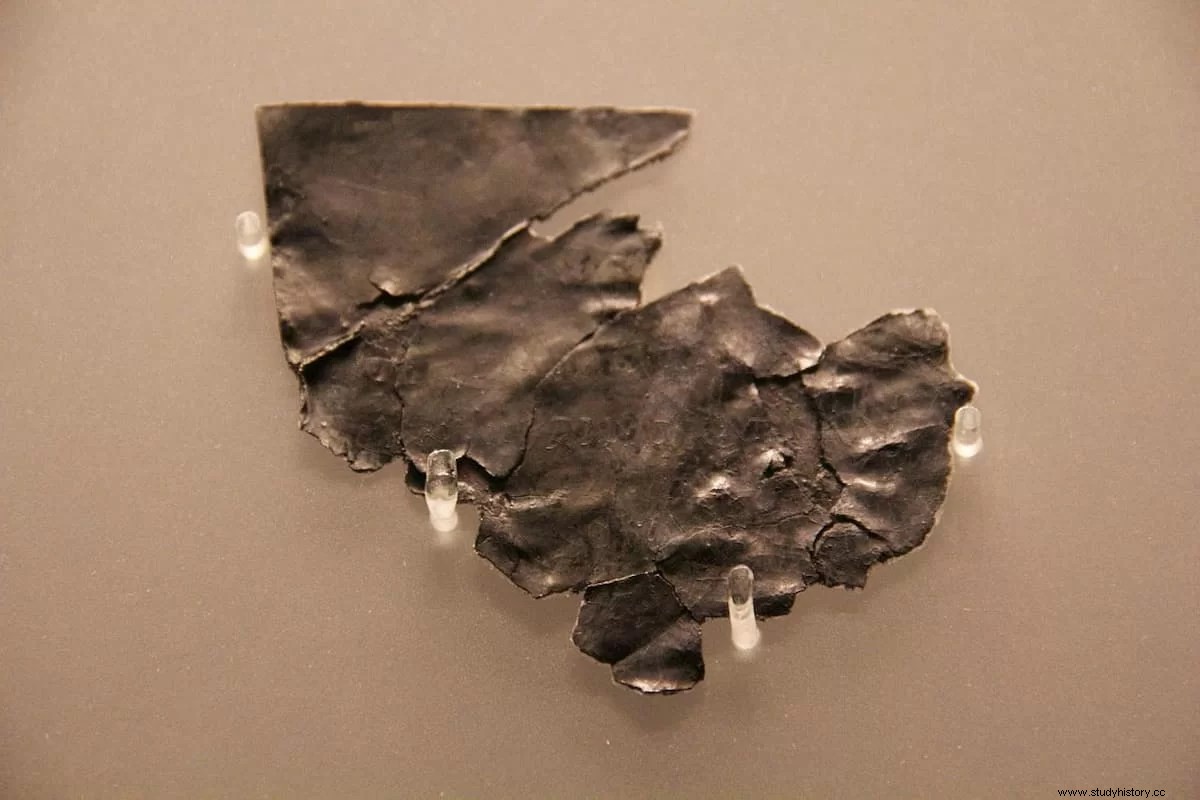Here we have seen those of Tutankhamun, Tamerlane and Jacques de Molay, which together with Moctezuma's (although this is of a different nature), are the most famous legendary curses in History. But it is that in other times it became quite common to resort to those imprecations and evil desires; in ancient Rome, for example, they used to be written down in what are called defixionis tabella i.e. curse tablets.
Most were made of lead and could be spells as well as religious or funerary formulas. An extraordinary amount was found in the English town of Bath.
Bath is a city in the county of Sommerset, which overlooks the Bristol Channel, the tongue of sea that separates England from South Wales. It was founded by the Romans in the year 43 AD. with the name of Aquae Sulis, alluding to the British aquatic goddess who presided over the previous Celtic sanctuary and who the invaders syncretically assimilated to Minerva.

There was a sacred spring of thermal waters on which some baths and a temple were built, to which later, around the 3rd century, perimeter walls were added. The baths decayed over time until two hundred years later, with the definitive abandonment of Britain by the Romans, they were left in ruins and covered by successive accumulations of sediment.
Between 1978 and 1983 several excavation campaigns were carried out under the direction of archaeologists Sir Barrington Windsor Cunliffe and Peter Davenport that would lead to the complex becoming part of the UNESCO World Heritage Site in 1987, in addition to converting the place in a tourist attraction that includes a spa and visits to the site to see the Roman architectural structures that are dotted around the city (apart from the later Saxon, Norman, Tudor and others). Of course, there is also a museum where the found pieces are exhibited.

In the Bath Museum, which is right where the baths are, you can see the spectacular structures of the caldarium , the tepidarium and the frigidarium , as well as the hippocaustum , the fluted Corinthian columns that supported a frieze and a pediment decorated with a controversial masculine face (for some, a gorgon; for others, the Ocean god or the Celtic solar divinity), a female bronze head identified with Sulis-Minerva and a Extraordinary set of denarii (twelve thousand) which constitutes the largest collection of votive coins in Great Britain.
But what interests us here is another collection also found in Bath:the one made up of 130 curse tablets, whose chronology extends over two centuries, from the 2nd to the 4th. They appeared under the aforementioned Sacred Spring and presented a diverse state of conservation, some being in good condition while others barely had fragments left.
As usual in this type of pieces, they are made of lead alloyed with tin and occasional traces of copper, forming thin rectangular sheets so flexible that once the inscription was made they could be rolled up, folded or even nailed to a wall.

As can be deduced, in the defixionis tabella petitions to the gods were inscribed which, generally, used to be for revenge; or curses, as its name indicates, although in other places they are of a loving or magical nature (seering). The fact that there were some baths in Bath means that all but one contain messages related to the use of the facilities. These are prayers for the divinities to punish those who have stolen valuables from the locker room:jewelry, cash or even the clothes themselves, since wearing a new tunic and leaving the old one was a classic. This is especially significant because most of the victims were from the lower class.
In the case of Bath, almost all the inscriptions follow the same formula, which suggests that there was a model:the stolen property is transferred to the deity, so that he becomes the victim, quite a desecration; it is followed by the name of the suspect accompanied -although not necessarily- by the caller; and it is requested that the thief be forced to return the loot, leaving in the hands of the god (or rather the goddess, since it was Sulis-Minerva) the final decision on whether to punish him or not. Some typical examples could be:

Most of the tablets are in the colloquial Latin spoken by the Romano-British population.
Two were written in a language believed to be Britannia Celtic, which would make them unique pieces, although they have not been translated (archaeologist Roger Simon Ouin Tomlin published a translation of the collection in 1988 under the title Tabellae Sulis:Roman Inscribed Tablets of Tin and Lead from the Sacred Spring at Bath ).
Not all the tablets are easy to interpret exactly, not only because of the state of some or the difficulties of the Latin abbreviations, but also because there are some that do not present a real writing but an imitation:some signs that would try to imitate the letters but by mere copying, without forming words, which would be due to the illiteracy typical of the humble social condition that we were saying. In fact, some are even blank; Sulis would know what they meant.
